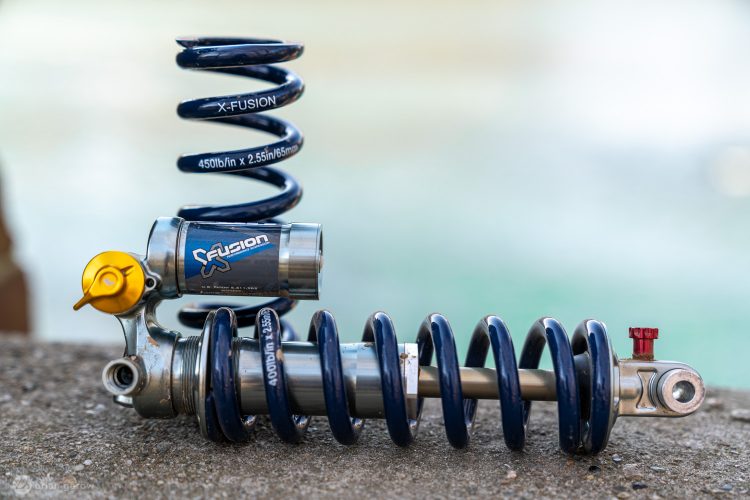
There are a lot of things to set up when you get a new bike, but figuring out the suspension is usually the priority. While a bike shop may help set the sag, it’s unlikely they’re out there on the trails with you on the first ride, and if you want to veer from the stock rebound settings on your fork or shock, it’s a different story.
To more closely examine the question of setting rebound, or the speed at which your suspension extends when compressed, we connected with Terje Hansen, the racing and mountain bike manager at Öhlins. The brand has long partnered with the Specialized Gravity downhill team and earlier this year they partnered with BMC’s World Cup XC team as the Öhlins suspension product lineup has grown.
We revived the quick question format for this piece and have one more coming up soon with Hansen to discuss dialing in compression settings.
What are the consequences of setting up your rebound too fast or slow on your mountain bike?
It’s a combination of a lot of things. You can’t just adjust your rebound. Basically, 80% of the performance of your setup is going to require you to have the correct spring rates. You start measuring the rear, and make sure you have either the right pressure or the right coil spring on there.
And that you can do with just reading numbers, reading a ruler. Thirty percent sag is normally a good target depending–some want to go 25%, some want to go 20%, some want to go 35%. That’s more of a personal preference. And then you take that out for a ride and the bike doesn’t bottom out too bad or anything like that, then you can start fine tuning things. You may be looking for more a little bit more comfort; comfort and grip normally goes hand in hand. Or comfort and traction.
If the bike is packing up, that probably feels harsh or you were going too deep into the stroke, where the spring and the leverage ratio and the progressiveness of the linkage was stepping in. Then you’re in that harsh, hard, progressive part. That’s one thing, and you need to open up your rebound a little bit to compensate for that.
Then you have the other thing when it comes to fast rebound is that it can be that the rear end is pushing you going into corners or when you’re sitting down and pedaling and you’re getting bucked a little bit, that could be too fast of rebound. Or, when you’re going really fast and you don’t feel you have any real control of the rear end, that can be too fast of rebound.
Is that the simplest way for people to think about it, that if the rebound is too fast, you won’t have control of your front or rear wheel and if it’s too slow, the suspension will feel harsh?
Yeah, it might also be that if you go under braking and you release the brakes and see how fast the bike can recover, it may not recover fast enough. Or if it’s packing up (getting stuck in the mid-stroke) and you sit down to pedal and hit the first tree root or something and the wheel can’t recover.
What I’m trying to tell riders and customers is don’t be scared to try things as long as you know where you’re starting. There are of course recommendations for like a base setup, how we deliver it and think it’s a good baseline. Of course that’s not 100% for all customers out there.
But it gives you a good baseline and then have a little note or write it on the frame. Start playing with your clicks. At least with our product, you’re not going to die, but you can learn so much from it.
Like what happens if it’s fully closed? How is the bike? And then go the other way around and you will learn your product and suspension and bike and you will have a much better ride. Unless you’re only riding one condition or something. If you can fine tune it, you will have so much benefit from it, you will have a much better ride.

What about high speed rebound? Most people focus on their low speed rebound settings, but how should folks think about high speed rebound? Is it as important as low speed?
For us it’s a combination of the two. Since we don’t have any high speed rebound dials on our products because we may not necessarily believe in that, we still believe it’s a good range you can cover with the rebound adjuster that we have. Once again, we try to simplify for the customer because it makes it easier.
If you’re running your suspension fully closed and have it re-valved, you can get more high speed rebound if you want to call it that.
As far as thinking about compression with rebound, is there a strong connection between the two? If you adjust your compression rate, should you adjust your rebound, or vice versa?
It’s a combination. If your rebound is too fast it doesn’t matter what you do compression-wise and vice versa. You have to find a good compromise. It’s hard to tell and it’s very individual.
A very good rider can maybe get away with a little less rebound damping than the average guy like me, but the more rebound damping you have can also give you a little bit of safety.
What else do you want to know about mountain bike suspension?





















3 Comments
Nov 22, 2023
Nov 23, 2023
Nov 24, 2023